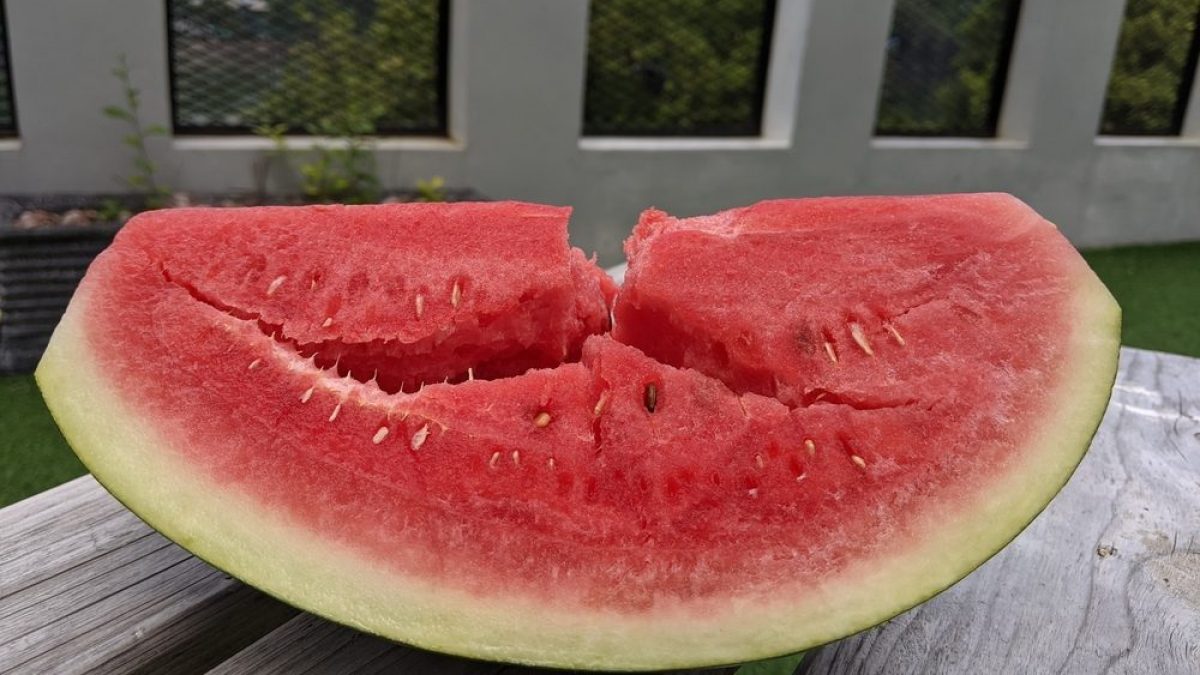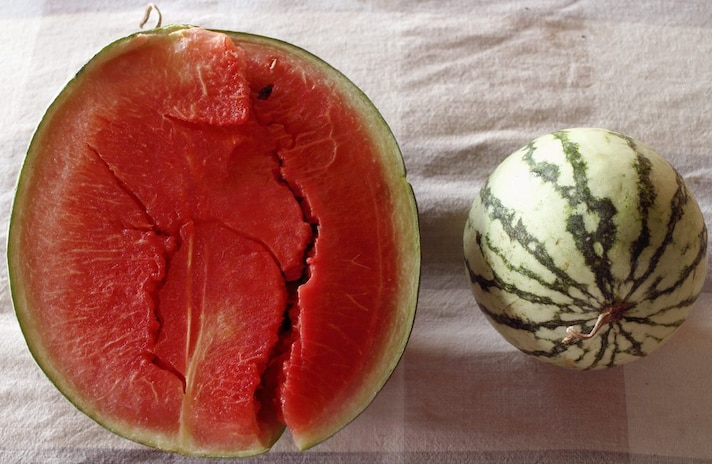
In recent years, especially during the summer, photos of a cracked watermelon, with visible white cracks or voids in the flesh, have been circulating online frequently. Some posts claim that this phenomenon is a sign of the presence of dangerous chemicals, such as growth hormones or banned fertilizers. But how much truth is there in all this? Is it really dangerous to eat a cracked watermelon, or is it another viral hoax?
What is Internal "Cracking" in Watermelon?
Internal cracks in a watermelon are known in agriculture as "internal cracking." This is a physiological phenomenon that can occur during the fruit's growth, particularly in the case of:
- Sudden changes in irrigation (after a period of drought, for example).
- Too rapid growth of the fruit, often linked to excess nitrogen or water.
- Extreme weather conditions (heat waves, sudden heavy rains).
The result is that the pulp can't keep up with the expansion of the peel, and internal cracks form. This phenomenon doesn't automatically indicate chemical contamination or genetic manipulation.
Is It Dangerous to Your Health?
In most cases, no, it's not dangerous. Internal cracks don't imply the presence of harmful substances. However, there are some important exceptions to consider:
- If the watermelon appears very soft, has an abnormal odor, or shows signs of fermentation, it is best not to consume it, as the cracks may have facilitated the entry of bacteria.
- If the pulp is yellowish or slimy, or if you smell alcohol or acid, internal fermentation may be underway. This should also be avoided.
In the absence of these signs, a watermelon with internal cracking can be safely consumed.

The Hoax of "Boosters" or Growth Hormones
One of the most widespread viral theories claims that the internal cracks are caused by injections of illegal hormones or "growth boosters." This theory lacks scientific basis: the use of growth hormones is neither a widespread nor necessary practice in watermelon cultivation. Furthermore, in many countries the use of hormones or chemical stimulants is prohibited or strictly regulated.
Watermelons grow naturally very quickly, especially in warm climates, and do not require artificial stimulation: cracks are therefore almost always linked to common natural or agricultural factors.
What To Do If You Find a Watermelon Cracked Internally?
Here are some practical tips:
- Observe the appearance: if the pulp has a normal color, is firm and has no strange odors, it is probably safe.
- Smell the fruit: if you smell any pungent, acidic, or fermenting odors, it's best not to consume it.
- Taste carefully: a small taste can help you determine if the flavor has changed. If in doubt, it's best to avoid it.
;Resize,width=767;)
